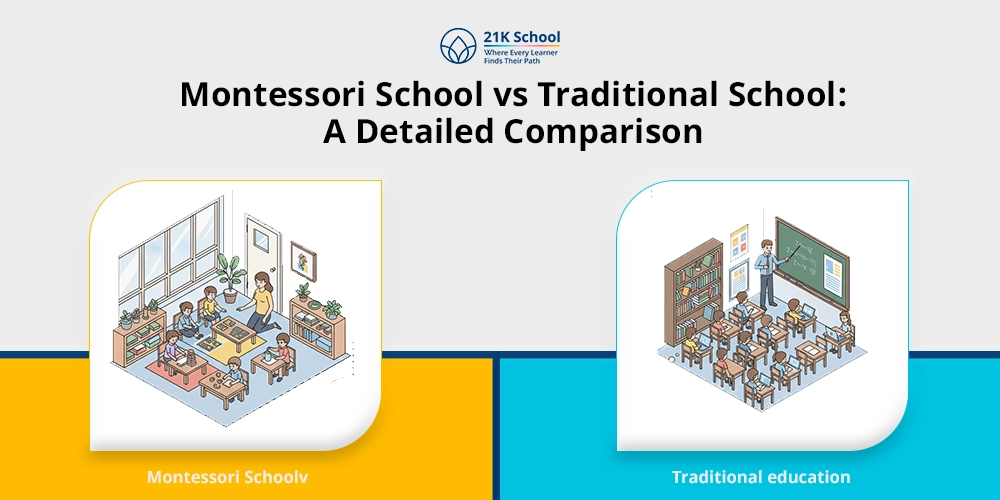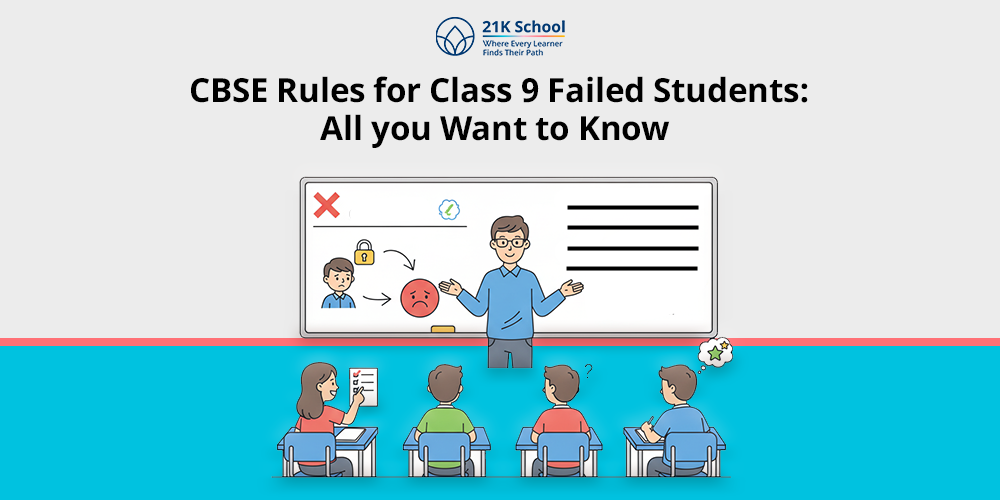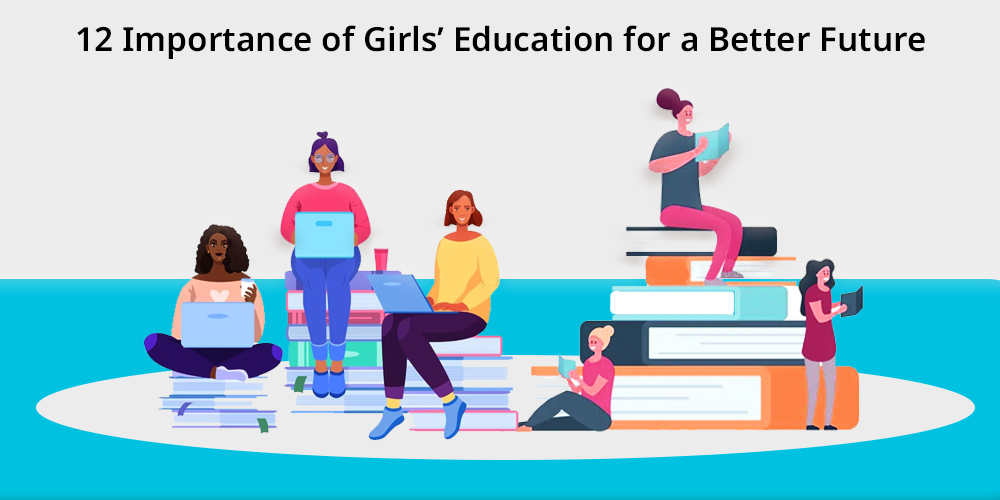
Do you know how girls play an important part in developing India?
Education plays an incredible role in developing the economy and avoiding social stigmas. Education is a vital tool for empowering women and transforming communities in India.
The topic of womens education in India has remained the same for many years, and girl child have to face many challenges regarding their education.
By educating girls, economies are strengthened and inequality is reduced. It makes societies more stable and resilient so that everyone, including boys and men, can realise their full potential.
There are many challenges faced in girls’ education, which creates a gender gap in education. The Indian government and non-governmental organisations are working their best to increase girls’ access to education, and things have improved in recent years.
It will take a lot of effort to ensure that every Indian girl can receive an excellent education and realise their full potential.
Contents
- 1 What is the Importance of Girls’ Education?
- 2 12 Importance of Girls’ Education: Crucial for Social Progress
- 2.1 1. Enhanced Gender Equality
- 2.2 2. Poverty
- 2.3 3. Education Inequality
- 2.4 4. Child Marriage
- 2.5 5. Poor Sanitation
- 2.6 6. Economic Barriers.
- 2.7 7. Access to Opportunities
- 2.8 8. Reduced Risk of Exploitation
- 2.9 9. Reduced Child and Maternal Mortality
- 2.10 10. Reduced Population Growth
- 2.11 11. Improved Family Well-being
- 2.12 12. Improved Health
- 3 Schemes for Promoting Girls’ Education
- 4 Final Note
What is the Importance of Girls’ Education?
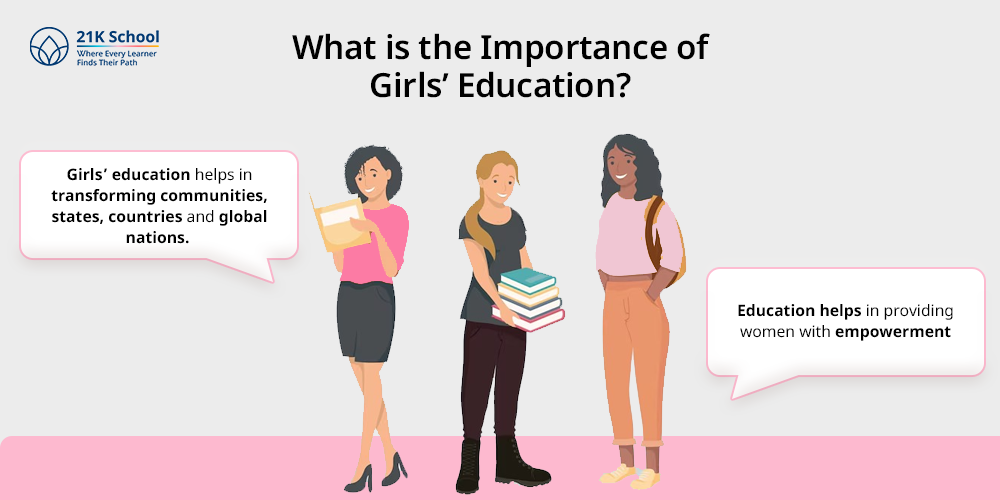
Girl child education is very essential for a positive change. Girls’ education helps in transforming communities, states, countries and global nations. Educated girls live healthy and productive lives as they know about the importance of safety and hygiene.
Education helps in providing women with empowerment and allows them to develop capabilities which help them in becoming financially successful.
Girl education plays an important role in alleviating poverty and creating new opportunities. The following are the mentioned importance of girls’ education in India.
12 Importance of Girls’ Education: Crucial for Social Progress
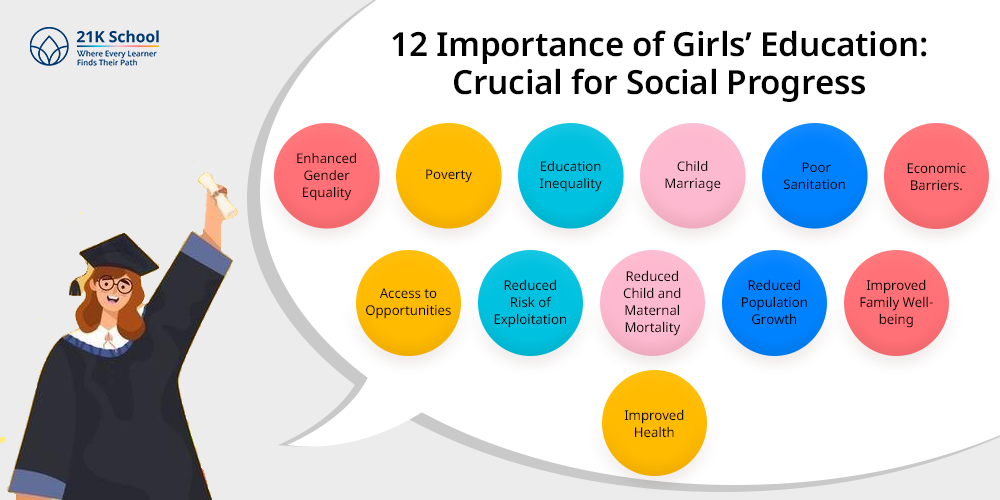
1. Enhanced Gender Equality
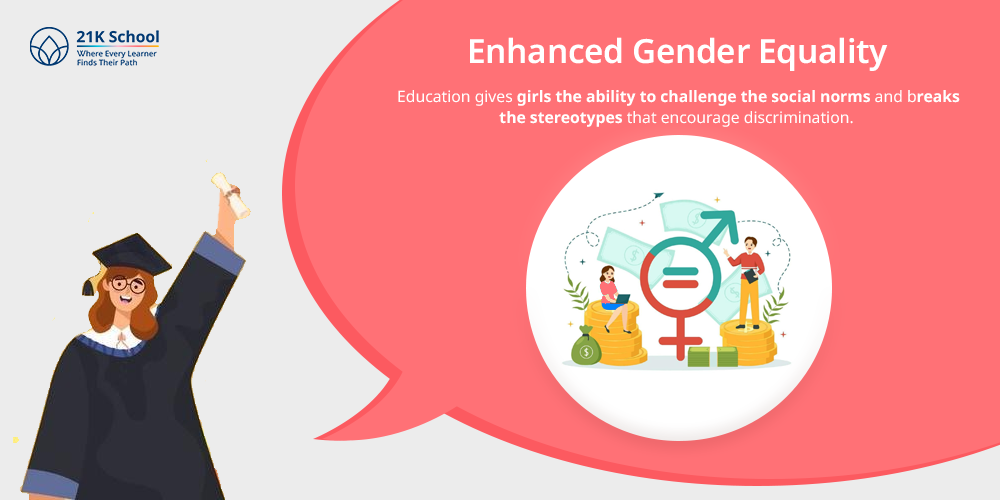
In addition to being an essential human right education is also a vital instrument for attaining gender equality. Education gives girls the ability to challenge the social norms and breaks the stereotypes that encourage discrimination.
This empowerment leads to increased participation in family and community decision making , fostering an equal learning culture which also promotes cultural awareness . Thus, it allows every gender to study equally.
2. Poverty
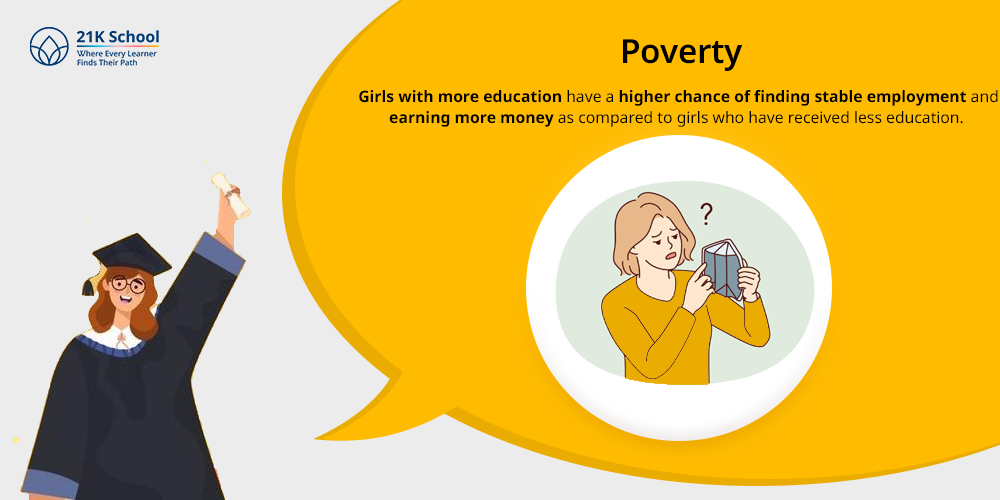
Educating women helps in breaking the cycle of poverty. Girls with more education have a higher chance of finding stable employment and earning more money as compared to girls who have received less education.
In order to break the cycle of poverty for future generations, educated women are more likely to make investments in the health and education of their children.
Proper support from families, communities and societies is essential in promoting women’s education and investing in their education.
3. Education Inequality

Girls often face educational inequality and barriers to education, including societal biases, financial constraints, and inadequate facilities.
Providing girls with education is very vital in order to eliminate such inequalities and ensure that all children, regardless of their gender, have equal access to high-quality education.
An equal and positive learning environment is essential in making a more equitable society where everyone can achieve their goals.
4. Child Marriage
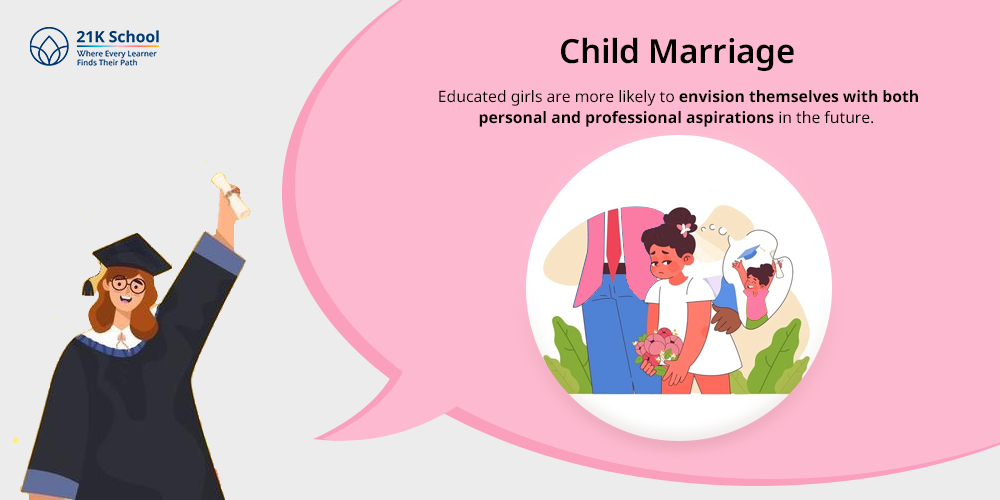
Education plays a major role in preventing child marriage, which is a widespread cause in many parts of the country. Educated girls are more likely to envision themselves with both personal and professional aspirations in the future.
Educating girls makes them empowered, and they take their decisions on their own. This allows them to pursue future opportunities for additional education and employment which increases their freedom.
5. Poor Sanitation
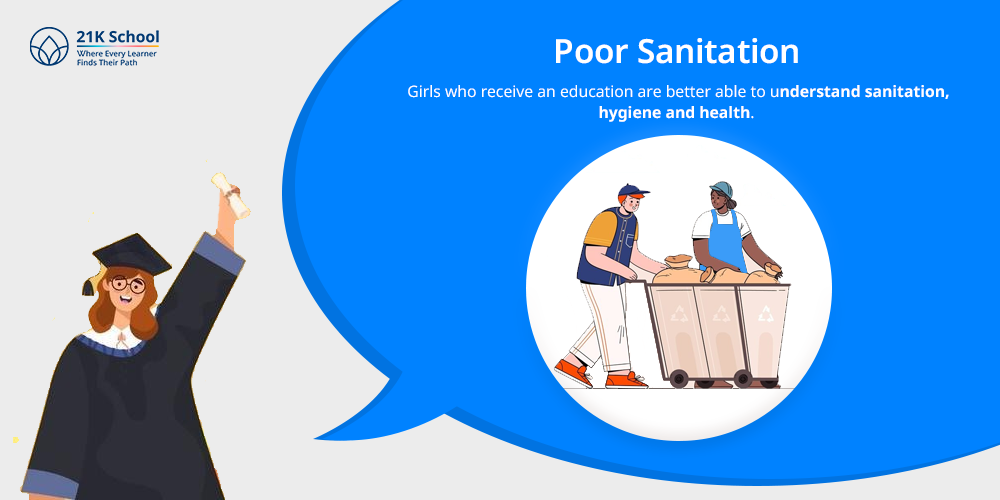
Lack of sanitation and poor hygiene is a major causes of concern in many places. Girls who receive an education are better able to understand sanitation, hygiene and health.
This knowledge is essential for encouraging improved health outcomes for their families, communities and themselves.
Girls with more education are also more likely to support adequate health care and sanitary facilities, which will improve public health overall.
6. Economic Barriers.
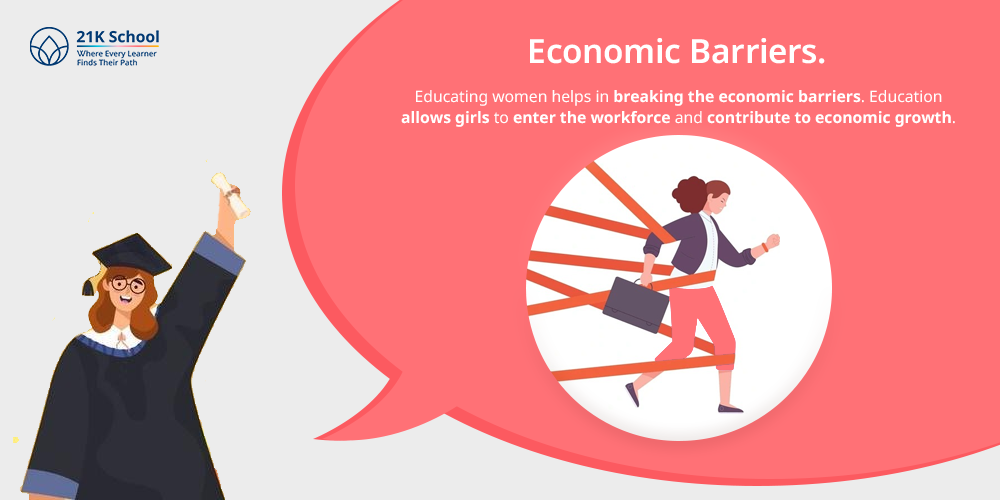
Educating women helps in breaking the economic barriers. Education allows girls to enter the workforce and contribute to economic growth.
Education enhances job opportunities for women as well as helps boost their confidence
Through this they can also start their own businesses, innovate, and participate in the formal economy. This increased participation helps to reduce economic barriers for families and communities, leading to enhanced economic stability and growth.
7. Access to Opportunities
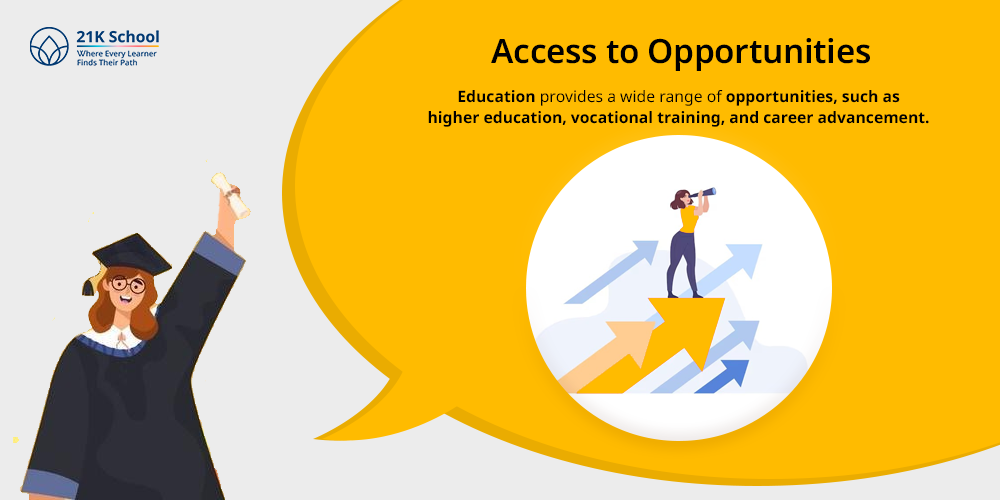
Education provides a wide range of opportunities, such as higher education, vocational training, and career advancement.
Girls who receive an education have a better chance of pursuing a wide range of career paths, including leadership roles in various industries.
By bringing diverse perspectives and abilities to the workforce, this access to opportunities benefits society as a whole in addition to the individual.
8. Reduced Risk of Exploitation
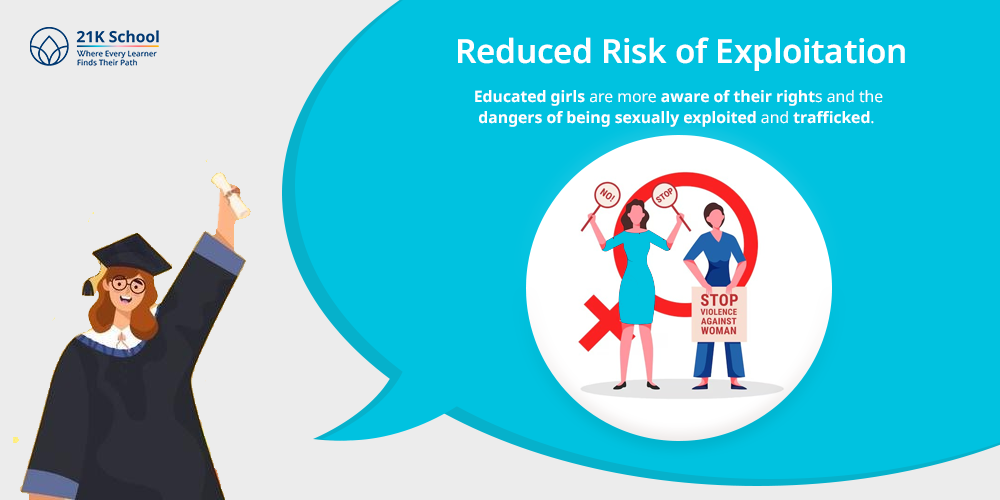
Human exploitation is a major cause of concern, especially for young girls. Many parts of the world have a high rate of exploitation. Educated girls are more aware of their rights and the dangers of being sexually exploited and trafficked.
As they acquire the knowledge and abilities to recognise and resist circumstance, they become less vulnerable to exploitation. This gives them the empowerment to combat human trafficking and ensure that girls can live safe, fulfilling lives.
9. Reduced Child and Maternal Mortality
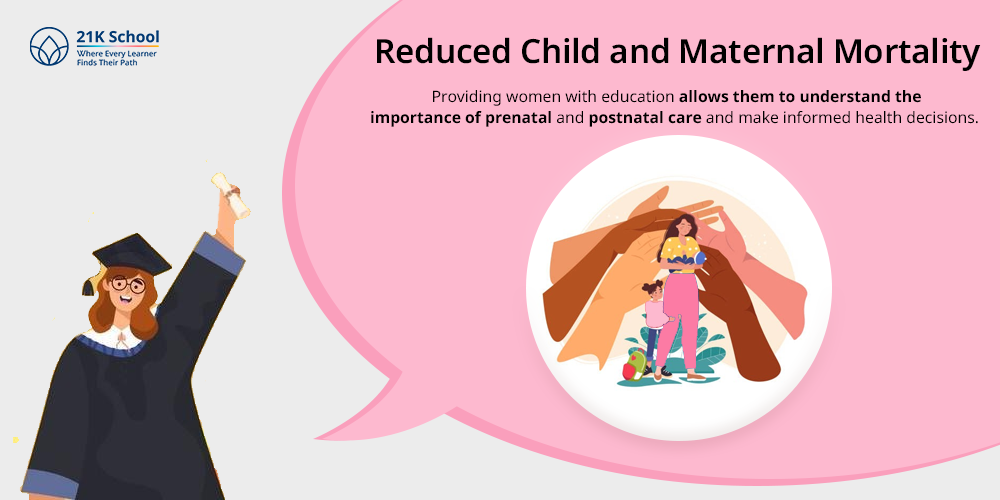
Educating girls helps in reducing child and maternal mortality. Providing women with education allows them to understand the importance of prenatal and postnatal care and make informed health decisions.
This information lowers the rates of maternal and infant mortality, which is advantageous to families and communities. Educated women make wise decisions and take positive steps.
10. Reduced Population Growth
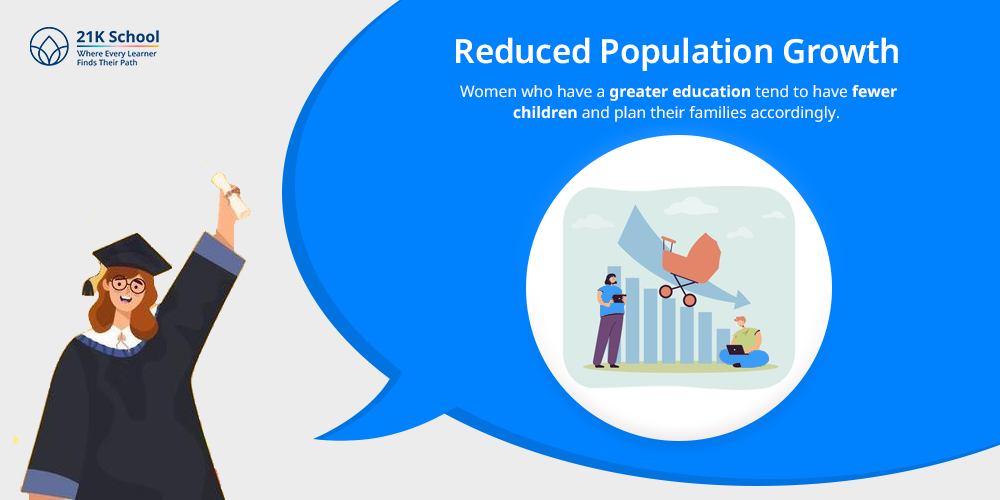
Girl child education helps in providing them with proper knowledge about family planning. Women who have a greater education tend to have fewer children and plan their families accordingly.
This tendency contributes to sustainable population growth by ensuring that resources are managed appropriately and that communities can thrive without placing an undue burden on their surroundings.
11. Improved Family Well-being
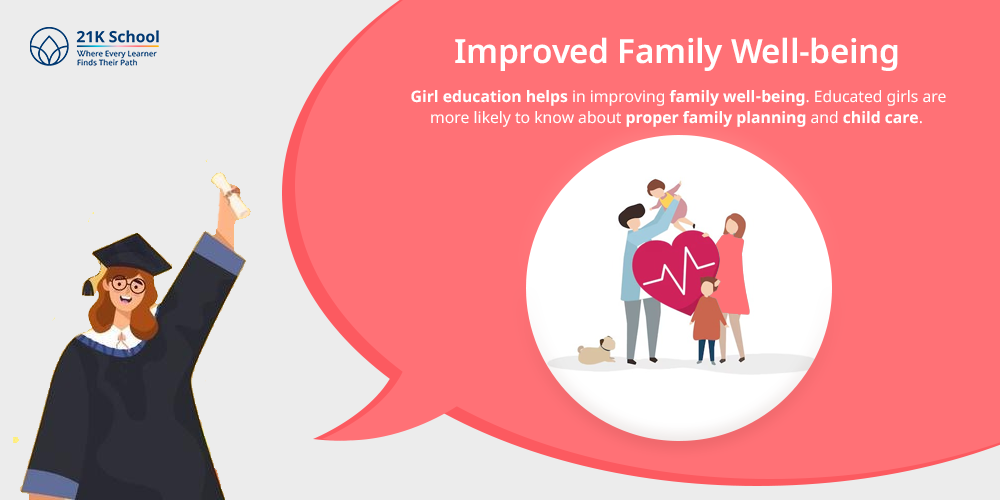
Girl education helps in improving family well-being. Educated girls are more likely to know about proper family planning and child care.
Families with higher levels of education strengthen communities and societies, creating a positive feedback. This allows them to develop proper control over their health and promotes an active mind towards their family.
12. Improved Health
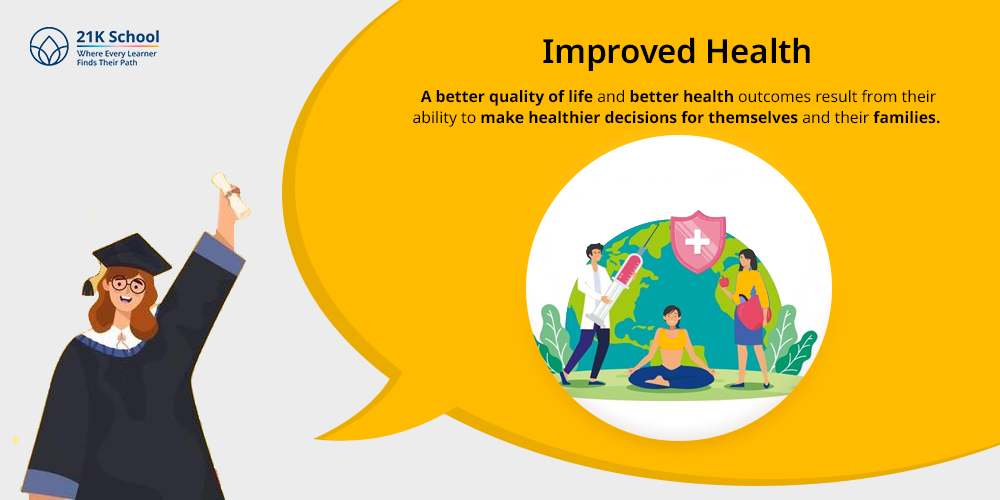
Education gives girls vital knowledge about disease, prevention, reproductive health and nutrition. A better quality of life and better health outcomes result from their ability to make healthier decisions for themselves and their families.
Additionally, women with higher levels of education are more likely to support community-beneficial health services and policies.
Schemes for Promoting Girls’ Education
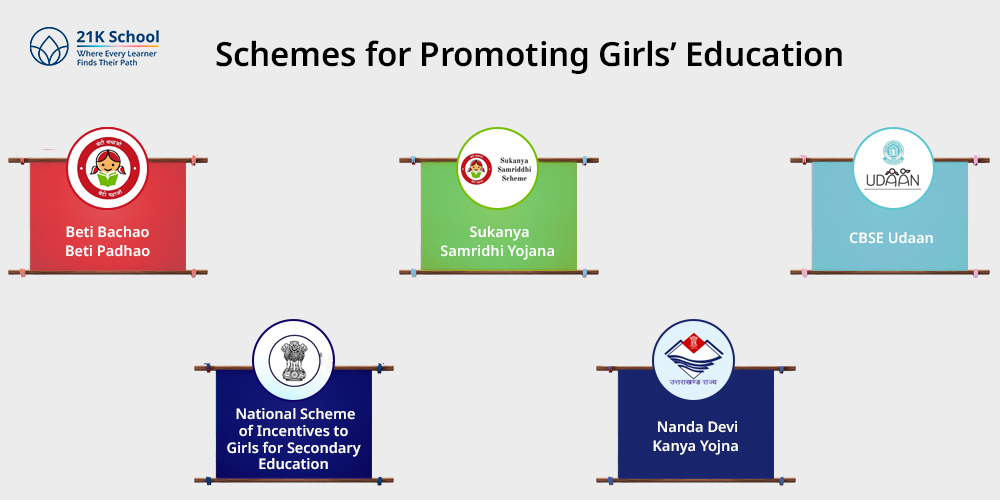
The Government of India has introduced various policies and schemes for girls to promote girl child education in India.
This scheme helps in enhancing women’s literacy rate and encourages female enrollment in schools. This also helps in eliminating the problems of women’s education in India .
The Indian government has implemented a number of programs to encourage womens education and alter public perceptions regarding girls education. This policy provides support in terms of monetary, personal and medical opportunities.
This makes sure that every girl child receives equal and quality education. The following are the schemes mentioned, introduced by the government in order to promote girl education.
1. Beti Bachao Beti Padhao
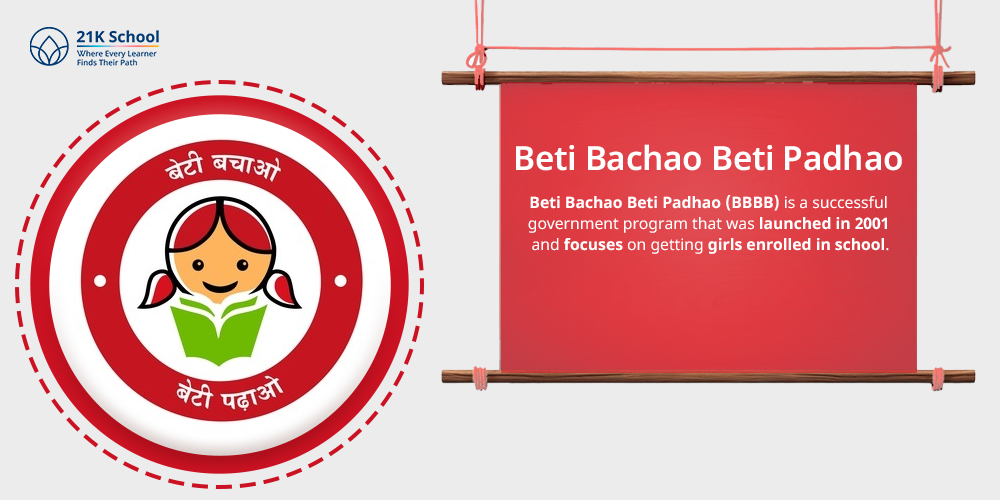
Beti Bachao Beti Padhao (BBBB) is a successful government program that was launched in 2015 and focuses on getting girls enrolled in school.
This program’s primary goal is to increase the number of girls admitted and the child-to-sex ratio. This scheme also focuses on social issues such as gender based abortion, low sex ratio, women empowerment and so on.
This scheme also encourages community engagement and develops rural areas for education and women’s health.
2. Sukanya Samridhi Yojana

Sukanya Samridhi Yojana (SSY) is a popular scheme introduced by the government of India in the year 2015. The main objective of this program is to provide financial aid to underprivileged women who are unable to finish their education due to financial constraints.
This small deposit plan offers high interest rates. This scheme also encourages the parents of the children to start saving for their future by the age of 10.
3. CBSE Udaan
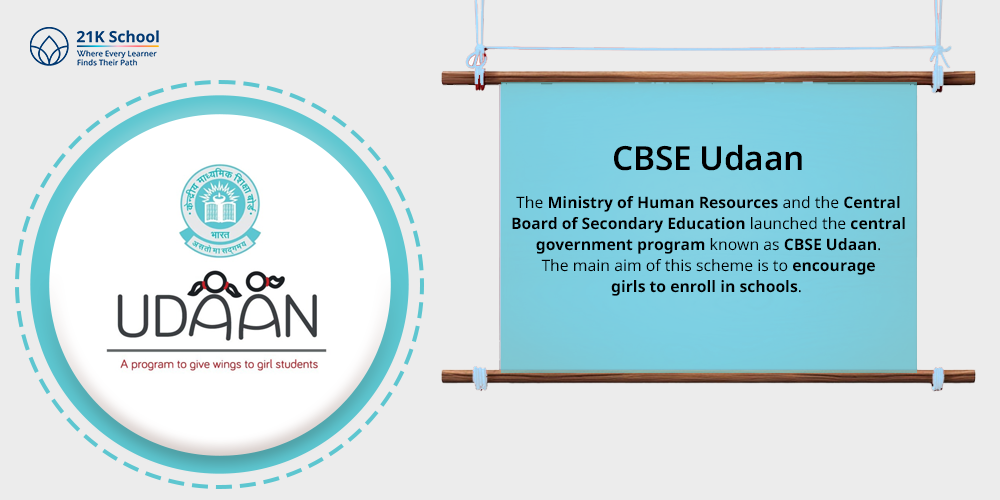
The Ministry of Human Resources and the Central Board of Secondary Education launched the central government program known as CBSE Udaan. The main aim of this scheme is to encourage girls to enroll in schools.
The goal of the Udaan scheme is to give women from economically disadvantaged groups access to developmental programs. This policy gives women in India equal opportunities and improves their educational opportunities.
4. National Scheme of Incentives to Girls for Secondary Education
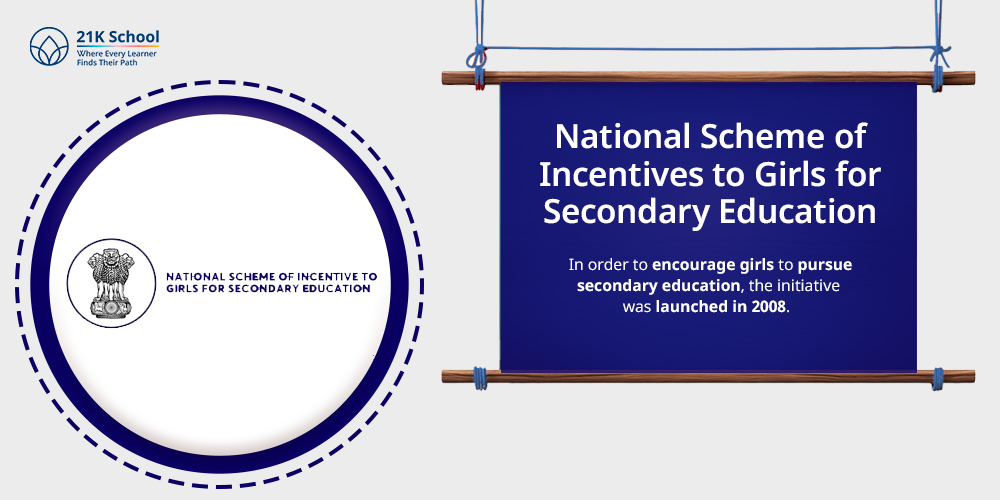
This program offered Rs. 3000 as an incentive to girls who were pursuing secondary education. In order to encourage girls to pursue secondary education, the initiative was launched in 2008.
This program’s outstanding performance has allowed female students from diverse backgrounds to enrol in secondary and postsecondary education.
5. Nanda Devi Kanya Yojna
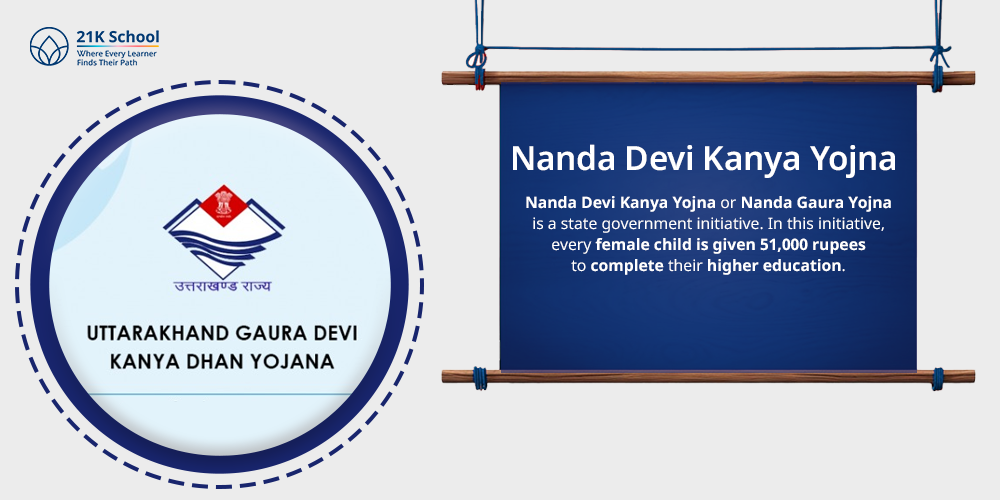
Nanda Devi Kanya Yojna or Nanda Gaura Yojna is a state government initiative. In this initiative, every female child is given 51,000 rupees to complete their higher education.
Under this initiative, a one-time amount of Rs 11,000 has been granted by the government if a female child is born.
This scheme motivates girl children to enrol in schools and achieve higher education. Another important factor of this scheme is to maintain the class gender and enhance the literacy rate.
Final Note
Girls’ education is a fundamental right and helps in developing India’s social and economic conditions.
We can end the cycle of poverty, advance gender equality and enhance family and community health outcomes by empowering girls through education.
The government’s dedication to creating a more just society is demonstrated by the numerous programs designed to increase girls’ educational opportunities.
As we continue to address the educational obstacles that girls face, it is critical to understand that funding their education is an investment in the future of the country.
In addition to improving their families, educated girls will make a substantial contribution to the general advancement and well-being of society.

